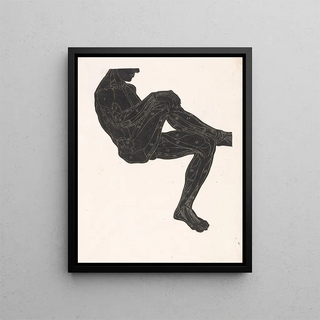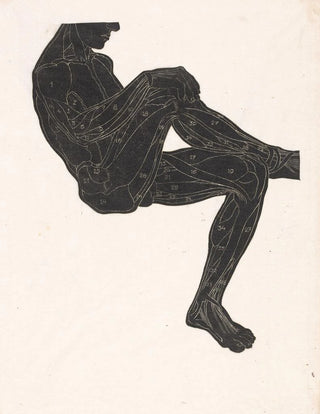Art print | Anatomical study of the muscles of the legs and arms of a man in silhouette - Reijer Stolk


View from behind

Frame (optional)
In the vast panorama of art history, some works stand out for their ability to capture the very essence of humanity through the lens of science and aesthetics. The art print of “Anatomical Study of the Muscles of the Legs and Arms of a Man in Silhouette” by Reijer Stolk is part of this tradition, blending anatomical precision with artistic sensitivity. This piece, which evokes the relentless quest to understand the human body, invites viewers to a deep reflection on the beauty of the human form and the mechanisms underlying it. Exploring this work transports us to a universe where art and science meet, revealing truths about our own existence.
Style and uniqueness of the work
Stolk's work is distinguished by its accuracy and meticulous attention to anatomical details. Every muscle, every curve is rendered with such finesse that it almost seems to come alive before the viewer's eyes. The silhouette of the man, both simple and complex, represents a harmony between scientific rigor and artistic elegance. The flowing lines and delicate shadows give this study an almost sculptural dimension, where the artist manages to transcend mere representation to evoke a sense of movement and vitality. This unique approach allows the work to appeal to both art enthusiasts and science lovers, thus creating a bridge between two disciplines often perceived as opposed.
The artist and his influence
Reijer Stolk, a Dutch artist of the 17th century, established himself as a pioneer in the field of artistic anatomy. His work reflects a time when interest in the human body and its scientific study was growing. Influenced by the great masters of his era, Stolk developed a style that is uniquely his own, characterized by a harmonious fusion of meticulous observation and aesthetic representation. His legacy endures today, inspiring many artists and scientists around the world. By revisiting his works, we better understand the impact he had on the perception of anatomy in art, making him

Matte finish

View from behind

Frame (optional)
In the vast panorama of art history, some works stand out for their ability to capture the very essence of humanity through the lens of science and aesthetics. The art print of “Anatomical Study of the Muscles of the Legs and Arms of a Man in Silhouette” by Reijer Stolk is part of this tradition, blending anatomical precision with artistic sensitivity. This piece, which evokes the relentless quest to understand the human body, invites viewers to a deep reflection on the beauty of the human form and the mechanisms underlying it. Exploring this work transports us to a universe where art and science meet, revealing truths about our own existence.
Style and uniqueness of the work
Stolk's work is distinguished by its accuracy and meticulous attention to anatomical details. Every muscle, every curve is rendered with such finesse that it almost seems to come alive before the viewer's eyes. The silhouette of the man, both simple and complex, represents a harmony between scientific rigor and artistic elegance. The flowing lines and delicate shadows give this study an almost sculptural dimension, where the artist manages to transcend mere representation to evoke a sense of movement and vitality. This unique approach allows the work to appeal to both art enthusiasts and science lovers, thus creating a bridge between two disciplines often perceived as opposed.
The artist and his influence
Reijer Stolk, a Dutch artist of the 17th century, established himself as a pioneer in the field of artistic anatomy. His work reflects a time when interest in the human body and its scientific study was growing. Influenced by the great masters of his era, Stolk developed a style that is uniquely his own, characterized by a harmonious fusion of meticulous observation and aesthetic representation. His legacy endures today, inspiring many artists and scientists around the world. By revisiting his works, we better understand the impact he had on the perception of anatomy in art, making him






